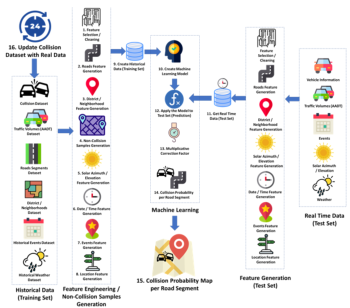


Research Direction:
Health care and business data analytics Health care data analytics This project aims to exploit and evaluate the potential of data analytics solutions for the development of subject-specific ADL models using WiFi data. The system will subsequently identify abnormal activity
subject-specific ADL models using WiFi data. The system will subsequently identify abnormal activity employing these models and provide appropriate alerts to a caregiver - such as a person entering the
employing these models and provide appropriate alerts to a caregiver - such as a person entering the kitchen to prepare a meal but that does not open the fridge/cabinets to get food; a person using or not
kitchen to prepare a meal but that does not open the fridge/cabinets to get food; a person using or not using a needed walker leading to increased fall risk; a person going to the washroom in the middle of the
night and not returning to bed.
Collaborators/ Support:
using a needed walker leading to increased fall risk; a person going to the washroom in the middle of the
night and not returning to bed.
Collaborators/ Support: Publications:
Publications:  •
I. O. Joudeh, A.-M. Cretu, B. Wallace, R.A. Goubran, M. Allegue-Martinez, A. Alkhalid, and F.
Knoefel, "Analyzing WiFi Channel State Information to Distinguish Sitting-Down and Standing-Up Activities", submitted to IEEE Trans.
Instrum. & Meas, 2019, NEW.
•
I. O. Joudeh, A.-M. Cretu, B. Wallace, R. Goubran, A. Alkhalid, M. Allegue, and F. Knoefel, "WiFi Channel State Information-Based
Recognition of Sitting-Down and Standing-Up Activities", IEEE Int. Conf. Medical Measurements and Applications, Turkey, 2019, NEW.
•
I. O. Joudeh, A.-M. Cretu, B. Wallace, R. Goubran, "Recognition of Sitting-down and Standing-up Activities using WiFi Channel State
Information", Data Day 6.0, Carleton University, poster presentation, May 2019 (Research Poster Prize from the Statistical Society of
Ottawa, first place).
The design of multiple applications in human activity recognition, in areas
such as healthcare, sports and safety, relies on wearable sensor
•
I. O. Joudeh, A.-M. Cretu, B. Wallace, R.A. Goubran, M. Allegue-Martinez, A. Alkhalid, and F.
Knoefel, "Analyzing WiFi Channel State Information to Distinguish Sitting-Down and Standing-Up Activities", submitted to IEEE Trans.
Instrum. & Meas, 2019, NEW.
•
I. O. Joudeh, A.-M. Cretu, B. Wallace, R. Goubran, A. Alkhalid, M. Allegue, and F. Knoefel, "WiFi Channel State Information-Based
Recognition of Sitting-Down and Standing-Up Activities", IEEE Int. Conf. Medical Measurements and Applications, Turkey, 2019, NEW.
•
I. O. Joudeh, A.-M. Cretu, B. Wallace, R. Goubran, "Recognition of Sitting-down and Standing-up Activities using WiFi Channel State
Information", Data Day 6.0, Carleton University, poster presentation, May 2019 (Research Poster Prize from the Statistical Society of
Ottawa, first place).
The design of multiple applications in human activity recognition, in areas
such as healthcare, sports and safety, relies on wearable sensor technologies. However, when making decisions based on the data
technologies. However, when making decisions based on the data acquired by such sensors in practical situations, several factors related to
sensor data alignment, data losses, and noise among other experimental
constrains, deteriorate data quality and model accuracy. To tackle these
acquired by such sensors in practical situations, several factors related to
sensor data alignment, data losses, and noise among other experimental
constrains, deteriorate data quality and model accuracy. To tackle these issues, this paper presents a data-driven iterative learning framework to
issues, this paper presents a data-driven iterative learning framework to classify human locomotion activities such as walk, stand, lie, and sit,
classify human locomotion activities such as walk, stand, lie, and sit, extracted from the Opportunity dataset. Data acquired by twelve 3D
extracted from the Opportunity dataset. Data acquired by twelve 3D acceleration sensors and seven inertial measurement units are initially de-
noised using a two-stage consecutive filtering approach combining a band-
pass Finite Impulse Response (FIR) and a wavelet filter. A series of
acceleration sensors and seven inertial measurement units are initially de-
noised using a two-stage consecutive filtering approach combining a band-
pass Finite Impulse Response (FIR) and a wavelet filter. A series of statistical parameters are extracted from the kinematical features, including
the principal components and singular value decomposition of roll, pitch,
statistical parameters are extracted from the kinematical features, including
the principal components and singular value decomposition of roll, pitch, yaw and the norm of the axial components. The novel approach aiming to
yaw and the norm of the axial components. The novel approach aiming to minimize the number of samples required to classify human locomotion
minimize the number of samples required to classify human locomotion activities based on these features consists in an iterative extraction of the
activities based on these features consists in an iterative extraction of the best candidates to build a training dataset. Candidate training samples are
selected when the Euclidean distance between an input data and its
best candidates to build a training dataset. Candidate training samples are
selected when the Euclidean distance between an input data and its cluster's centroid is larger than the mean plus the standard deviation of all
Euclidean distances between all input data and their corresponding
cluster's centroid is larger than the mean plus the standard deviation of all
Euclidean distances between all input data and their corresponding clusters. The newly built dataset is then used to train an SVM multi-class
clusters. The newly built dataset is then used to train an SVM multi-class classifier. The latter will produce the lowest prediction error. The proposed learning framework ensures a high level of robustness to variations
in the quality of input data, while only using a much lower number of training samples and therefore a much shorter training time, which is an
important consideration given the large size of the dataset.
Publications:
classifier. The latter will produce the lowest prediction error. The proposed learning framework ensures a high level of robustness to variations
in the quality of input data, while only using a much lower number of training samples and therefore a much shorter training time, which is an
important consideration given the large size of the dataset.
Publications:  •
J. C. Davila, A.-M. Cretu and M. Zaremba, "Wearable Sensor Data Classification for Human Activity Recognition Based on an Iterative
Learning Framework", MDPI Sensors, vol. 17, art. 1287, 2017, doi: 10.3390/s17061287.
•
J. C. Davila, A.-M. Cretu and M. Zaremba, "Iterative Learning for Human Activity Recognition from Wearable Sensor Data", 3rd Int.
Electron. Conf. Sensors and Applications, 15-30. Nov. 2016, Sciforum El. Conf. Series, Vol. 3, 2016, S2002, doi: 10.3390/ecsa-3-
S2002 (Best Paper Award).
This project explores the capabilities of Kinect for human movement quantification for in-home physical
•
J. C. Davila, A.-M. Cretu and M. Zaremba, "Wearable Sensor Data Classification for Human Activity Recognition Based on an Iterative
Learning Framework", MDPI Sensors, vol. 17, art. 1287, 2017, doi: 10.3390/s17061287.
•
J. C. Davila, A.-M. Cretu and M. Zaremba, "Iterative Learning for Human Activity Recognition from Wearable Sensor Data", 3rd Int.
Electron. Conf. Sensors and Applications, 15-30. Nov. 2016, Sciforum El. Conf. Series, Vol. 3, 2016, S2002, doi: 10.3390/ecsa-3-
S2002 (Best Paper Award).
This project explores the capabilities of Kinect for human movement quantification for in-home physical exercise monitoring. The analysis goes beyond the state-of-the-art by monitoring more joints and offering
exercise monitoring. The analysis goes beyond the state-of-the-art by monitoring more joints and offering more advanced reporting capabilities on the movement such as: the position and trajectory of each joint, the
working envelope of each body member, the average velocity, and the fatigue of the user after an exercise
more advanced reporting capabilities on the movement such as: the position and trajectory of each joint, the
working envelope of each body member, the average velocity, and the fatigue of the user after an exercise sequence. This data can be visualised and compared to a standard (e.g. a healthy user for rehabilitation
sequence. This data can be visualised and compared to a standard (e.g. a healthy user for rehabilitation purposes) or an ideal performance (e.g. perfect sport pose for exercising) in order to give the user a measure
on his/her own performance and incite his/her motivation to continue the training program. Such information
can be used as well by a therapist or professional sports trainer to evaluate the progress of a patient or of a
trainee. An adaptation is proposed as well for the posture estimation in the context of piano pedagogy.
Collaborators/ Support:
Publications:
•
H. Nematallah, S. Rajan and A.-M. Cretu, "Logistic Model Tree for Human Activity Recognition Using
purposes) or an ideal performance (e.g. perfect sport pose for exercising) in order to give the user a measure
on his/her own performance and incite his/her motivation to continue the training program. Such information
can be used as well by a therapist or professional sports trainer to evaluate the progress of a patient or of a
trainee. An adaptation is proposed as well for the posture estimation in the context of piano pedagogy.
Collaborators/ Support:
Publications:
•
H. Nematallah, S. Rajan and A.-M. Cretu, "Logistic Model Tree for Human Activity Recognition Using Smartphone-Based Inertial Sensors", IEEE Sensors Conference, Montréal, 2019, NEW.
•
P. Payeur, G. M. Nascimento, J. Beacon, G. Comeau, A.-M. Cretu, V. D'Aoust, and M.-A.
Smartphone-Based Inertial Sensors", IEEE Sensors Conference, Montréal, 2019, NEW.
•
P. Payeur, G. M. Nascimento, J. Beacon, G. Comeau, A.-M. Cretu, V. D'Aoust, and M.-A. Charpentier, "Human Gesture Quantification: an Evaluation Tool for Somatic Training and Piano
Charpentier, "Human Gesture Quantification: an Evaluation Tool for Somatic Training and Piano Performance", IEEE Symp. Haptic Audio-Visual Environments and Games, pp. 100-105, Dallas, Texas, US, Oct. 2014.
•
S. Gauthier and A.-M. Cretu, "Human Movement Quantification using Kinect for In-Home Physical Exercise Monitoring”, IEEE Int.
Performance", IEEE Symp. Haptic Audio-Visual Environments and Games, pp. 100-105, Dallas, Texas, US, Oct. 2014.
•
S. Gauthier and A.-M. Cretu, "Human Movement Quantification using Kinect for In-Home Physical Exercise Monitoring”, IEEE Int. Conf. Computational Intelligence and Virtual Environments for Measurement Systems and Applications, pp. 6-11, Ottawa, May 2014.
Business data analytics
This project aims at network data analysis to define and capture behavior profiles of network components via machine learning for the
detection of anomalies, specifically for the classification of security concerns.
Collaborators/ Support:
The long term objective of this research project is to attempt to establish reliable
associations between traffic data and accident occurrence. These associations
should help a proactive approach for accident management by an automatic
detection of prone locations and conditions for accidents.
Collaborators/ Support:
Conf. Computational Intelligence and Virtual Environments for Measurement Systems and Applications, pp. 6-11, Ottawa, May 2014.
Business data analytics
This project aims at network data analysis to define and capture behavior profiles of network components via machine learning for the
detection of anomalies, specifically for the classification of security concerns.
Collaborators/ Support:
The long term objective of this research project is to attempt to establish reliable
associations between traffic data and accident occurrence. These associations
should help a proactive approach for accident management by an automatic
detection of prone locations and conditions for accidents.
Collaborators/ Support: Publications:
Publications:  •
E. Reveron, and A.-M. Cretu, "A Framework for Collision Prediction Using
Historical Accident Information and Real-time Sensor Data: A Case Study for
the City of Ottawa", IEEE Int. Symp. Robotics and Sensor Environments,
Ottawa, pp. 143-149, 2019, NEW.
•
N.P. Bobbili and A.-M. Cretu, "Adaptive Weighting with SMOTE for Learning
from Imbalanced Datasets: A Case Study for Traffic Offence Prediction", IEEE
Int. Conf. Computational Intelligence and Virtual Environments for
Measurement Systems and Applications, Ottawa, Canada, 2018.
•
A.-M. Cretu, A. Mageau-Pétrin and C. Hopgood, “Traffic Accident Modeling
and Prediction”, Ottawa Police Services Research Project, Technical report,
May 2016, 33 pages.
•
A.-M. Cretu, and A. Mageau-Pétrin, “Intelligence-led traffic enforcement: Data mining techniques for accident prediction”, Ottawa
Police Services Research Project, Technical report, Jan. 2016, 159 slides.
The objective of this project is to study the impact of the use of the avatars (or
•
E. Reveron, and A.-M. Cretu, "A Framework for Collision Prediction Using
Historical Accident Information and Real-time Sensor Data: A Case Study for
the City of Ottawa", IEEE Int. Symp. Robotics and Sensor Environments,
Ottawa, pp. 143-149, 2019, NEW.
•
N.P. Bobbili and A.-M. Cretu, "Adaptive Weighting with SMOTE for Learning
from Imbalanced Datasets: A Case Study for Traffic Offence Prediction", IEEE
Int. Conf. Computational Intelligence and Virtual Environments for
Measurement Systems and Applications, Ottawa, Canada, 2018.
•
A.-M. Cretu, A. Mageau-Pétrin and C. Hopgood, “Traffic Accident Modeling
and Prediction”, Ottawa Police Services Research Project, Technical report,
May 2016, 33 pages.
•
A.-M. Cretu, and A. Mageau-Pétrin, “Intelligence-led traffic enforcement: Data mining techniques for accident prediction”, Ottawa
Police Services Research Project, Technical report, Jan. 2016, 159 slides.
The objective of this project is to study the impact of the use of the avatars (or profile images) for the detection of communities in social networks.
Support:
profile images) for the detection of communities in social networks.
Support:

Recherche
© Ana-Maria Cretu 2019
Ana-Maria Cretu



Community detection in social networks using avatars or images


Intelligence-led traffic enforcement


Iterative learning framework for wearable sensor data for human locomotion classification
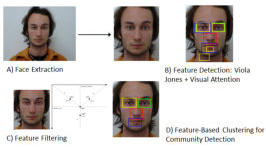
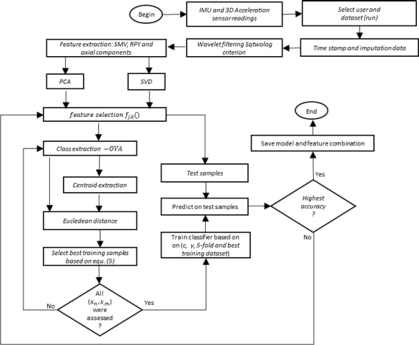

Smart environment monitoring through data analytics processing of WiFi to detect Activities of Daily Living (ADL)



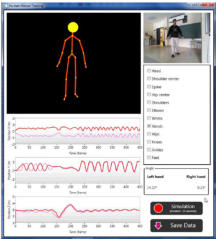



Human motion quantification for performance monitoring
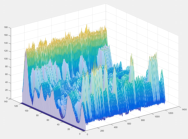

Machine-learning based system for trust level classification of network devices

